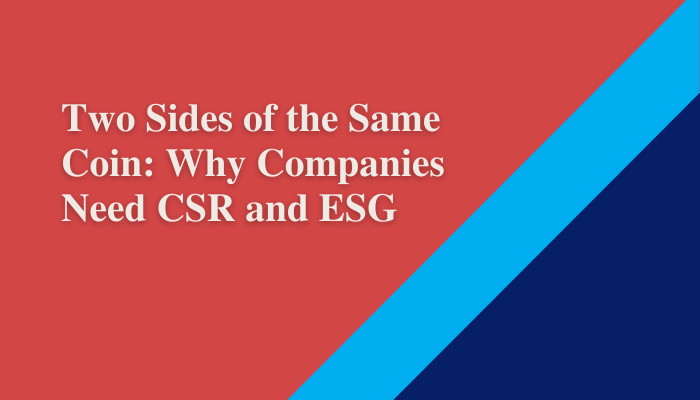
Many companies have implemented corporate social responsibility (CSR) initiatives to reflect their values and culture to investors, consumers and employees. Historically, CSR encapsulates a company’s approach to economic, environmental and social policies. However, as more investors use these factors to evaluate risk and pro-social corporate practices, the subjectivity and qualitative nature of CSR have demonstrated the need for a more quantifiable approach.
Is CSR still relevant? Should companies still invest time and energy in developing CSR strategies? Absolutely. CSR practices, however, are not enough on their own. They work best when integrated with companies’ environmental, social and governance (ESG) strategies.
What is ESG and how is it different than CSR?
ESG refers to a company’s environmental (E), social (S) and governance (G) practices. And while that definition makes ESG sound somewhat synonymous with CSR, there are some key differentiators.
Quantitative vs. Qualitative: CSR’s main purpose is to align a company’s business values and mission with its environmental and social activities and policies, while ESG builds off that alignment and establishes measurable goals. In other words, CSR outlines a company’s qualitative mission, while ESG establishes quantifiable metrics to evaluate progress towards that mission. For example, a CSR initiative may outline the company’s commitment to carbon neutrality, while its ESG strategy will dictate the steps the company will take to reduce its carbon footprint by a quantifiable amount.
Top-Down Implementation: For many companies, CSR strategies have largely been crafted and implemented in an uncoordinated fashion. The Harvard Business Review reports that CEOs have typically not been actively engaged in the creation and application of CSR strategies. In many cases, it’s internal managers who initiate CSR directives. Consequently, these efforts often stand in isolation and are not integrated into a larger, company-wide strategy. On the flip side, CEOs tend to take a more active role in crafting their organizations’ ESG strategy. CEOs’ investment in their ESG strategies drive a more top-down approach to ESG implementation.
Evolving Strategy vs. Stagnant Goals: If a company’s values and purpose evolve over time, then its CSR strategy will change as well. However, a company’s fundamental values and goals tend to change less often, remaining largely stagnant, than the factors that influence its ESG strategy. To keep their ESG strategy effective, companies need to stay on top of new potential risk, technology, social issues, and other factors that influence ESG ratings. ESG strategies require continuous maintenance, adaptation, and evaluation.
Why do companies need both CSR and ESG?
Practices related to environmental impact, diversity, equity and inclusion, and socially responsible corporate governance are driving value-oriented investment. The number of investors using ESG criteria to determine which companies they invest in continues to grow. While CSR often doesn’t lend itself to quantitative evaluation, it adds value and lays the groundwork for companies’ ESG strategies. Companies can use their existing CSR infrastructure as a stepping-stone in building ESG strategies that yield quantifiable data. CSR and ESG are the two sides of the “pro-social” company coin; you need CSR to guide components of your ESG strategy, and you need ESG to measure the efficacy and extent of your CSR goals.


